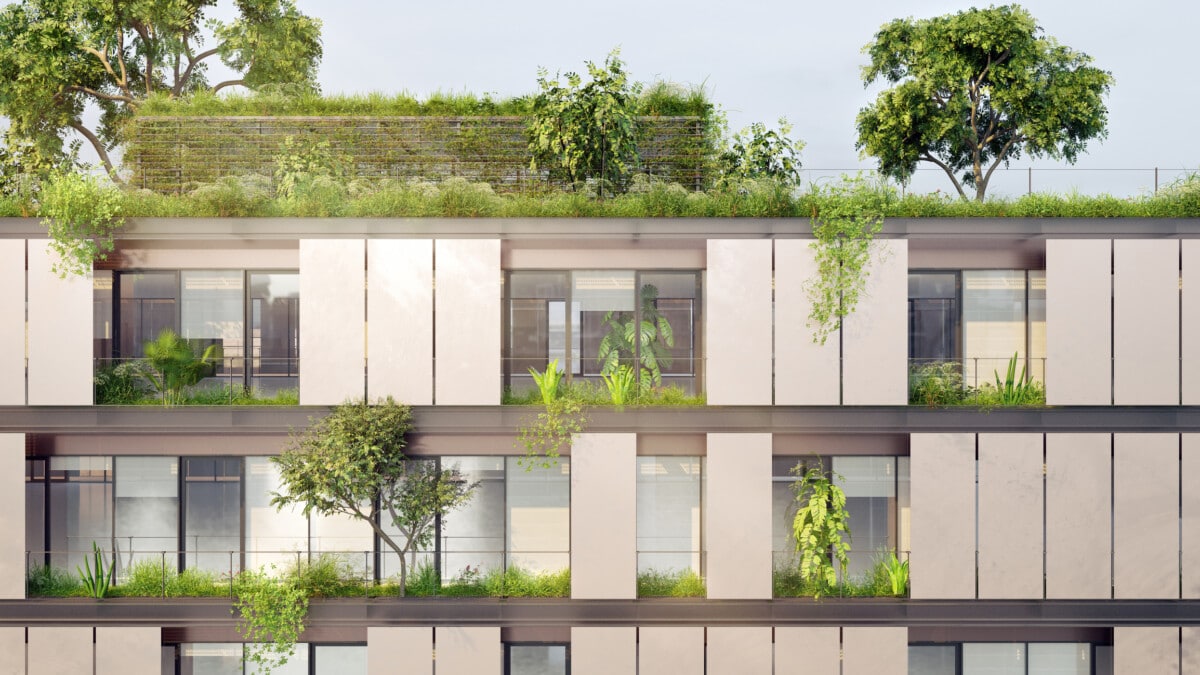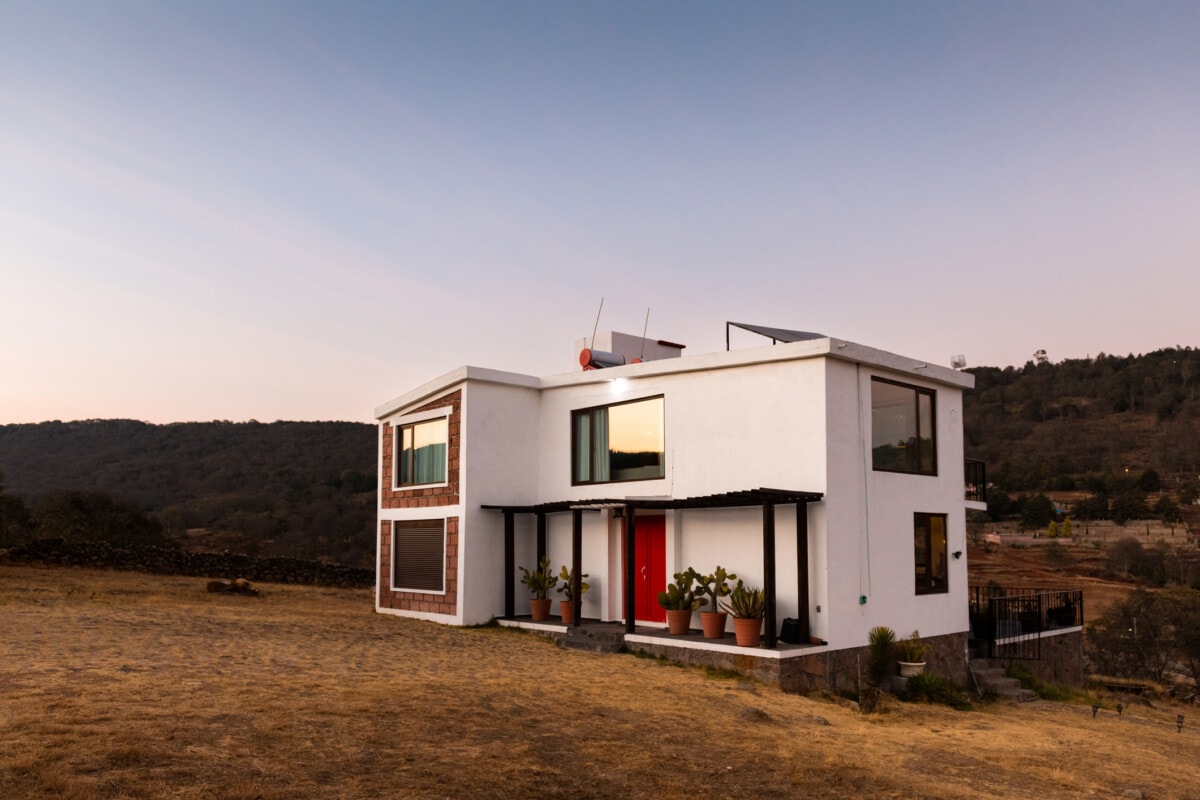Green structure is no longer simply a pattern; it’s a motion that’s getting momentum every day. With environment modification on everybody’s mind, individuals are trying to find methods to decrease their carbon footprint and leave a much better world for future generations. That’s where green structure can be found in. Home builders, financiers, and house owners alike are getting on the sustainability train, excited to make a distinction.
One method to reveal that a structure or advancement is dedicated to sustainability and equity is by getting it licensed by a 3rd-party. The biggest 3rd-party accreditation program on the planet is LEED, with over 100,000 licensed tasks worldwide. From property systems to towering high-rise buildings, LEED-certified structures are typically thought about the gold-standard in sustainability.
However have you ever questioned if your house can be LEED-certified? If so, you remain in luck. Green structure accreditation uses to any kind of structure, consisting of homes. So w hether you’re a property owner in Duluth, MN, wanting to live more sustainably, or a tenant in Wilmington, NC, who wishes to find out more, this Redfin guide is for you. We’ll enter into the essentials of the LEED accreditation program, the tasks it covers, and how to get your house LEED licensed.

What is LEED accreditation?
LEED accreditation is a worldwide acknowledged score system for sustainable, fair, and eco-friendly structures. The acronym LEED represents Management in Energy and Environmental Style. It was developed by the United States Green Structure Council (USGBC) in 1998 to motivate and acknowledge sustainable structure practices. Considering that its starting, LEED has actually been through various versions and reached every corner of the world, culminating in the present variation, v4.1.
The LEED accreditation procedure examines different elements of a structure’s style, building and construction, and operation, such as energy effectiveness, water preservation, usage of sustainable products, and indoor ecological quality. Based upon the assessment, a structure is granted points that identify its LEED accreditation level.
Accreditation levels
A job need to reach particular point turning points to attain LEED accreditation. These are:
- Certified/Green ( 40-49 points)
- Silver ( 50-59 points)
- Gold ( 60-79 points)
- Platinum ( 80-110 points)
It is necessary to keep in mind that requirements differ depending upon the particular LEED score system, such as Structure Style and Building And Construction or Interior Decoration and Building And Construction. Structures might get accreditations in several classifications and can lose them if they do not satisfy continuing education requirements.
What are the objectives of the LEED program?
LEED takes a look at a structure or neighborhood’s broad view, such as how it’s communicating with the environment, rather of a single aspect, such as energy or water. The objective of the program is to develop structures and neighborhoods that:
- Lower contribution to international environment modification.
- Improve private human health.
- Safeguard and bring back water resources.
- Safeguard and improve biodiversity and environment services.
- Promote sustainable and regenerative product cycles.
- Improve the neighborhood’s lifestyle.

Can a home be LEED licensed?
Yes, houses in the U.S., Canada, and Sweden can be LEED licensed under their LEED for Residences program. Accreditation is offered for numerous property tasks, such as single-family houses and multifamily structures.
The house accreditation procedure resembles other kinds of structures. It includes examining efficiency in vital locations, consisting of sustainable website advancement, water effectiveness, energy effectiveness, products choice, and indoor ecological quality. Points are then granted, which identifies your house’s accreditation level.
How to get LEED accreditation for your house
To get your home LEED-certified, you’ll require to follow a series of actions, from registering your job to recording and sending your application for accreditation. The procedure is a lot easier with brand-new building and construction, as you can create and personalize the house prior to constructing it. Here’s a summary:
- Select the scope of your job and develop a spending plan for enhancements.
- Put together a group of skilled specialists, such as designers, engineers, specialists, and LEED experts, who can assist identify if accreditation is possible on your home.
- Register your job on the USGBC site and pay the registration cost.
- Establish a strategy including LEED methods in different classifications (website choice, water effectiveness, energy effectiveness, products and resources, and indoor ecological quality).
- Carry out the scheduled methods throughout building and construction, and keep appropriate documents.
- Commission structure systems to guarantee they operate as planned.
- Assemble and send documents through LEED Online, in addition to the accreditation evaluation cost.
- Wait for USGBC evaluation and get an accreditation level (Qualified, Silver, Gold, or Platinum).
- Screen and keep your house’s efficiency to guarantee ongoing adherence to LEED requirements.
Is it worth it to get your house LEED licensed?
LEED accreditation advantages both you and the environment by showing a dedication to sustainability and the health of your next-door neighbors. All LEED-certified houses are developed to optimize physical health, boost cost savings, and improve your home’s worth. Due to the fact that of this, LEED-certified houses typically offer quicker and for more cash Furthermore, some federal governments supply tax rewards for sustainable practicies.
While it has numerous advantages, the accreditation procedure can be pricey and time-intensive. Take your budget plan and schedule into account prior to using.

Kinds of LEED tasks
LEED licenses various kinds of tasks, each with special requirements. Here’s a breakdown:
- Structure Style and Building And Construction (BD+C): This classification covers brand-new building and construction tasks and significant restorations of existing structures. Examples consist of industrial structures, workplaces, retail areas, schools, health care centers, storage facilities, and information centers.
- Interior Decoration and Building And Construction (ID+C): ID+C concentrates on occupant enhancement tasks within existing structures, such as workplace fit-outs and retail and dining establishment interiors.
- Structure Operations and Upkeep (O+M): This classification targets existing structures going through enhancements in their operations, upkeep, and residents’ habits to improve their ecological efficiency. It uses to different structure types, consisting of industrial, retail, hospitality, and property.
- Community Advancement (ND): N+D addresses the preparation, style, and building and construction of sustainable communities, promoting walkability, mixed-use advancement, and effective resource usage.
- Residences: This covers the style, building and construction, and remodelling of single-family houses, low-rise multifamily structures (approximately 3 stories), and mid-rise multifamily structures (4 to 6 stories). LEED for House consists of particular requirements for energy effectiveness, water preservation, sustainable products, and indoor air quality
- Cities and Communities: This examines citywide and local methods for energy, water, waste, transport, and social equity.
What are LEED accreditation requirements?
LEED accreditation requirements are based upon a set of requirements and credits that tasks need to satisfy or pursue to attain an accreditation level. These requirements are arranged into classifications that cover various elements of a structure’s ecological efficiency.
The primary requirement classifications (and point worths) are:
- Integrative procedure (approximately 1 point)
- Area and Transport (approximately 16 points)
- Sustainable Websites (approximately 10 points)
- Water Effectiveness (approximately 11 points)
- Energy and Environment (approximately 33 points)
- Products and Resources (approximately 13 points)
- Indoor Environmental Quality (approximately 17 points)
- Development (approximately 6 points)
- Regional Top Priority (approximately 4 points)
If a task gets enough points from these classifications, they are granted a LEED accreditation. Likewise, s ome federal governments might need or supply tax rewards for designers to get LEED accreditation.

Last ideas
LEED accreditation is a necessary action to constructing a climate-friendly future. As such, numerous LEED requirements have basically been composed into building regulations all over the world to guarantee the next generation of structures is more resource-conscious. Nevertheless, it’s not ideal. LEED accreditation is a pricey procedure that is not economically practical for the majority of people. Furthermore, LEED is inadequate by itself; more financial investment in tidy energy is required to effect environment modification.
If you’re thinking about getting LEED accreditation for your house, consider your financial resources and schedule, as the procedure might be hard and pricey. If you prosper, take pride in understanding that you’re promoting the health of your neighborhood and regional environment.